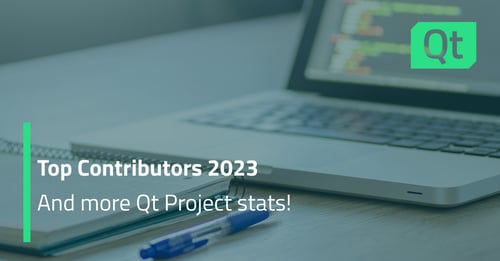Qt Quick is here, with community driven Qt ports for Android and Integrity RTOS and an exciting Qt roadmap
March 01, 2011 by Daniel Kihlberg | Comments
With the release of Qt Creator 2.1, we have now passed the official milestone needed to mark the official release of Qt Quick! Qt Quick (Qt UI Creation Kit) introduces exciting new functionality into Qt that lets developers and UI designers work together to rapidly create beautiful, fluid UIs and applications for any Qt platform, all based on our simple-to-learn QML language.
Qt Quick’s arrival is a good time to share some thoughts on its importance to Qt growth. Since 2007 we have been working towards making Qt a strong framework for building web-enabled devices. This was further supported with the introduction of the Qt Webkit integration in Qt 4.4. Following our acquisition by Nokia, we had additional requirements for designing and creating sexy UIs and apps for touch screen devices.
Without exaggeration I can say this about Qt Quick: Qt Quick is our next game changer. Qt Quick makes Qt easily accessible to many new developers and designers that are reluctant to learn or perform C++ coding, or those that find it challenging to create fluid touch UIs using our current tools. We estimate that many, many developers fall into one of these two categories.
Qt Quick arrives at a time where on-going investments in Qt by Nokia and by community members continue. Developers can look forward to a strong Qt roadmap. As you may know, Qt is used by many leading consumer electronic companies – in addition to Nokia – that use Qt to deliver tens of millions of web enabled devices such as printers, tablets, eBook readers, photo frames, Skype / video phones and more.
Results of some of our Qt research projects such as Lighthouse, intended as an upgrade and replacement for Qt for Embedded Linux, as well as the improvements in Qt WebKit for a better Internet experience will make Qt an ever more interesting choice for, in particular, Linux device developers for the years to come.
There are also some interesting research projects in Qt Labs and on our roadmap that can add even more force to Qt Quick’s growth, such as:
- Research of Google’s V8 JavaScript engine for use in Qt
- Research of how to export Photoshop (and Illustrator) files into QML
- The Scene Graph research project on making better use of modern graphic hardware
Follow our Qt blog and Qt Labs blog during this week and you’ll see a number of posts about cutting edge Qt Quick work, including Qt components for desktop, pinch area for two-finger interaction (4.7.3), touch area for raw touch point access, as well as right to left support for QML UIs.
As well as living within Nokia on Symbian and MeeGo, Qt lives in many places outside of Nokia too. Qt Community ports (not official Qt supported ports) are increasing in number and in popularity, and they are driving innovation and improvement by increasing involvement by the Qt developer community. We see this as a great up-side of being part of an open source community.
Probably the most interesting initiative, in good alpha quality, is the Qt for Android port using the Qt Creator IDE to let developers manage, develop, deploy, run & debug Qt Applications on Android Devices.
That Qt is also making its inroads in other areas – such as WebOS – is also interesting.
Finally, let us not forget the existing RTOS ports: QNX, INTEGRITY and VxWorks, used in industries such as IP-based communications, aerospace, medical and automotive. During the last few years we have seen a strong up-take in Qt in embedded devices, including this example of what Qt can be used for.
Developers wanting to enhance the functionality of these incomplete community ports can do so through contributions to the Gitorious open repository.
So with Qt Quick and our new releases, developers in the Qt community have even better tools to create great UIs and applications for multiple platforms.
Qt is very much alive, and now is an exciting time to be working with it. We are energized and ready to take Qt even further in collaboration with all of you.
Blog Topics:
Comments
Subscribe to our newsletter
Subscribe Newsletter
Try Qt 6.7 Now!
Download the latest release here: www.qt.io/download.
Qt 6.7 focuses on the expansion of supported platforms and industry standards. This makes code written with Qt more sustainable and brings more value in Qt as a long-term investment.
We're Hiring
Check out all our open positions here and follow us on Instagram to see what it's like to be #QtPeople.



